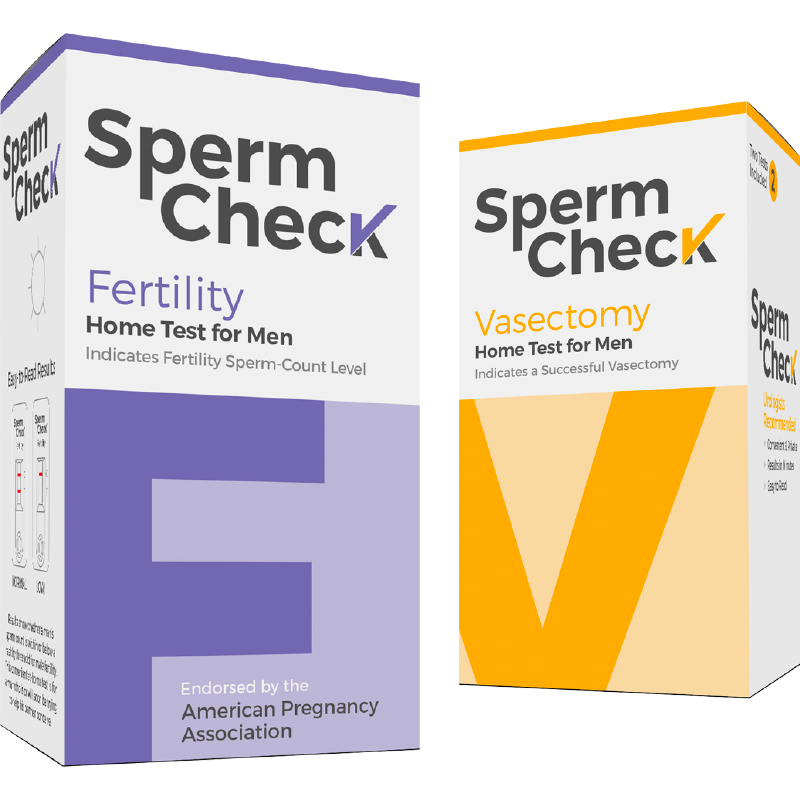
The thing about getting a vasectomy is that—even if you were totally down with the decision at the time—life changes. What once seemed like a solid decision a few years earlier suddenly sends you into a fit of buyer’s remorse. “What have I done?” you wonder.
The good news is that, just like getting that tattoo of your old girlfriend’s name removed from your forearm, you have options for getting your vasectomy reversed. And chances are, if you take some precautions and are proactive, you have pretty good odds of increasing your sperm count and getting pregnant the old-fashioned way.
What is a vasectomy reversal?
Let’s start with how you’re going to reopen your sperm factory by getting your vasectomy reversed. While your vasectomy was probably a pretty quick and straightforward procedure performed at your urologist’s office, putting it all back together again is more complicated.
During a vasovasostomy (the fancy term for a basic vasectomy reversal), a surgeon goes back in to try to reconnect the ends of the vas deferens that had been severed and closed up during your vasectomy; this is an approximately two-hour procedure. Once the ends are successfully joined back together, sperm can flow from the epididymis through the vas deferens and then out through the urethra during ejaculation, where it mixes with semen and prostate fluid.
The success of this procedure really depends on the skill of the surgeon and the amount of time that has passed since your vasectomy. After about five years, reconnecting the vas deferens becomes more complicated and a surgeon might have to perform a vasoepididymostomy, which connects the vas deferens directly to the epididymis; it takes about double the time to perform this surgery. You won’t know whether you’ll require this procedure until you’re under the proverbial knife and the surgeon can determine whether a blockage has occurred on the testes- end of the vas deferens, requiring the more complicated surgery.
Why get a vasectomy reversal?
If you’re rethinking your vasectomy, you should know that you’re not alone. About one in every 20 men find themselves in the same boat and opt for a vasectomy reversal. Some of their reasons include:
- Wanting more children
- Remarrying and wanting to have child with new wife
- Death of a child
- Post-vasectomy pain
- Not finding success with IVF
Keep this in mind before you schedule your vasectomy reversal
Nowadays, almost anything is possible, but at a price. Before you make a date with a surgeon to reverse your vasectomy, make sure you researched what it’s going to cost. Your vasectomy was probably around $1,000, but undoing that is going to cost $5,000-$12,000—and it’s not covered by health insurance.
Another angle to investigate is your partner’s ability to conceive. Before you go under the knife, make sure she’s not grappling with her own fertility issues, especially if she’s over 35, when conception becomes more of an issue.
What to expect after vasectomy reversal
Just like following your vasectomy, it takes a few months to start seeing any effects from your reversal surgery. It will likely take a few months for your sperm count to begin to increase significantly and become present in the ejaculate, but some men are lucky enough to see results in just a few weeks. If you’ve undergone the vasoepididymostomy, it may take six months to a year for sperm cells to return.
Your doctor will order a semen analysis about three months post vasectomy reversal to check if sperm have returned. You can monitor progress even earlier with SpermCheck, an over-the-counter kit you can use to test your sperm count at home and assess the success of your procedure.
Improving your odds of conception after vasectomy reversal
Following your procedure, there are a few things you can do—and not do—to help improve your chances of pregnancy after a vasectomy reversal:
- Clean up your act: The first thing you can do is to do away with unhealthy behavior, like smoking and drinking alcohol, which can severely impact your sperm production
- Put your balls on ice: This is not a figurative suggestion. Studies show that the cooler you keep it down there, the happier your sperm are and the more of them you produce. You can go old-school and grab a bag of frozen peas or get fancy with underwear that have built in pockets to slip in ice packs (#swanky)
- Rethink your diet: As with the cigarettes and booze, research has shown that a poor diet is not going to do your sperm count any favors. Opt instead for foods rich in nutrients to boost your fertility and improve your odds of pregnancy
- Start having more sex (especially when she’s ovulating): Part of the sperm production holdup immediately following your vasectomy reversal is that your body needs to flush dead sperm through your system before the new, healthy sperm are introduced. The more frequently you ejaculate, the quicker the turnover of sperm (of course, you need to wait three to four weeks post procedure before you can start getting busy at this). Another bonus is that you’re more likely to hit those few days each month that your partner is ovulating and at her most fertile. Practice makes perfect!
How successful are reverse vasectomies?
Despite all your due diligence—like finding an experienced surgeon, cutting down on booze and avoiding hot tubs—and a little bit of luck, there’s no guarantee that there’s a biological baby at the end of this vasectomy reversal rainbow.
While some couples are lucky enough to get pregnant a few weeks after the procedure, others have to wait two years before hitting the baby jackpot. On average though, it takes about six months to a year to find success. Generally speaking, if you don’t achieve pregnancy within six months to a year post-surgery, see a fertility specialist.
What to do if your vasectomy reversal is unsuccessful
Even if you fail to conceive naturally after your procedure, there are still options for making a baby that’s biologically yours. In vitro fertilization (IVF), which involves isolating an egg with many sperm to promote fertilization, is one of the most common alternatives. Another method is ICSI-IVF, which has the embryologist take a single sperm and inject it directly into an egg.
“A prolonged interval from vasectomy to reversal (more than five years) predicts a lower chance of pregnancy occurring without treatment,” Dr. Edward Marut, a reproductive endocrinologist with Fertility Centers of Illinois, tells Very Well Family. “In this circumstance, IVF is a better option to ensure success.
Like that long-ago tattoo that needed 10 rounds of laser to remove, pregnancy after vasectomy reversal might take a little extra work; but when it’s over, you’ll be happy with the result.
Want to take control of your fertility?
Whether you’re looking to add to your family or make sure that your vasectomy is still working, an at-home test from SpermCheck can help you get answers about your sperm count level.




